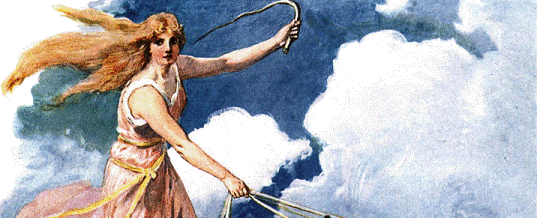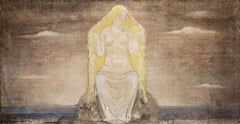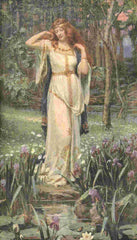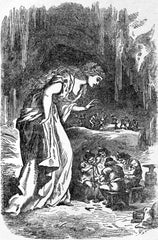on all orders over $100
on all orders over $100

In Norse Mythology Freya, also known as 'Freyja' and 'Freja', was a goddess of the Vanir tribe, one of the two main groups of gods. She was born as one half of a pair of twins, her brother being Freyr. Her father was Njord, another prominent member of the Vanir clan, however the identity of her mother remains unknown. There is some speculation that her mother could be Njord's own sister, Nerthus. The Vanir were considered 'lesser' gods by the Aesir and there was even war between the two tribes due to cultural differences and their ideas around the practicing of magic.

Freya - John Bauer, 1905
After the war between the two clans had ended a truce was made. Part of the peace deal included both sides agreeing to exchange hostages, who would live amongst the enemy tribe to ensure the peace was lasting. Freya became one of these hostages, so even though she was originally a Vanir Goddess she was said to have lived amongst the Aesir in Asgard. After some time it was said that she became an honorary member of the Aesir and was accepted as one of their own.
Freya is often associated with Love, Passion, Fertility and Beauty. She was notoriously promiscuous and in one saga was accused of having slept with all of the other gods, elves, and even her own brother. However it should be noted that the accusations were made by Loki, the trickster, so they should probably be taken with a pinch of salt.

Freya and her necklace - James Doyle Penrose, 1890
There are many theories about the day 'Friday' being associated with the Norse Goddess Freya, since this has also been the case with other days of the week. However this theory is still open to speculation and we may never know for sure.
There are mentions of Freya in numerous poems within the Poetic Edda, which is considered to be one of the most authentic sources of Norse Mythological knowledge. In one such poem, known as the Grímnismál, it said that Freya was the ruler of a realm called Fólkvangr, in which she would choose half of the dead souls who had been slain in battle to remain there with her, whilst the other half would go to Valhalla with Odin.
In the Prose Edda, by Snorr Sturluson, Freya also featured in the book of Heimskringla where she was first introduced as a captive after the Aesir-Vanir war and a native member of the Vanir tribe. At Odin's request Freya became a priestess and in her new position she carried out many sacrifices, for which she later became famous.
The goddess was often said to be a lover of traveling. She would ride her chariot, pulled by two large black cats, and also had the ability to fly with the help of her cloak of falcon feathers. There are numerous occasions where she lends this cloak to other gods and goddesses in the Norse sagas in order to grant them the ability to fly when they needed to travel long distances quickly.

Freyja in her chariot pulled by Cats - Emil Doepler (1905)
A mysterious form of pre-christian pagan magic that was often mentioned in Norse sagas was known as Seidr. It involved seeing into the future and bringing about desired outcomes within the scope of possible fates. The metaphorical process of its practitioners 'weaving' their desired fate into existence is often mentioned.

Freya in the dwarves cave - Luis Huard, 1891
In the Ynglinga Saga Freya is said to be a practitioner of this type of magic, known as a Völva. These were sorceresses who would travel from town to town performing acts of Seidr in return for food and shelter. Their reputation amongst the local population was often dubious as they were met with fear, distrust, happiness and gratitude in equal measure.
There is a general consensus amongst historians that there is some connection between Freya and the goddess Frigg, it is very likely that they are even the same person. The later sources of Norse mythology paint a picture of the two of them as vaguely distinct characters, however it is difficult to ignore the many similarities between the two of them, leading many modern historians to theorise that they came from a single origin.

Freyja Seeking her Husband - Nils Blommér, 1852
Freya's husband is named Óðr, which is very similar to Odin, the husband of Frigg and head of the Aesir clan. When translated into Old Norse the two names actually derive from the same word, meaning 'motivation', 'enthusiasm' or 'inspiration'. 'Óðinn' is just the masculine version of this word.
There are also other similarities in the stories of the two goddesses, including their infamous promiscuity and extra-marital affairs and their practice of weaving and the aforementioned ancient norse magical art of Seidr.
If you enjoyed out article or have anything you'd like to add then please leave a comment below.
Check out some of our handmade Viking Axes.
Leave a comment